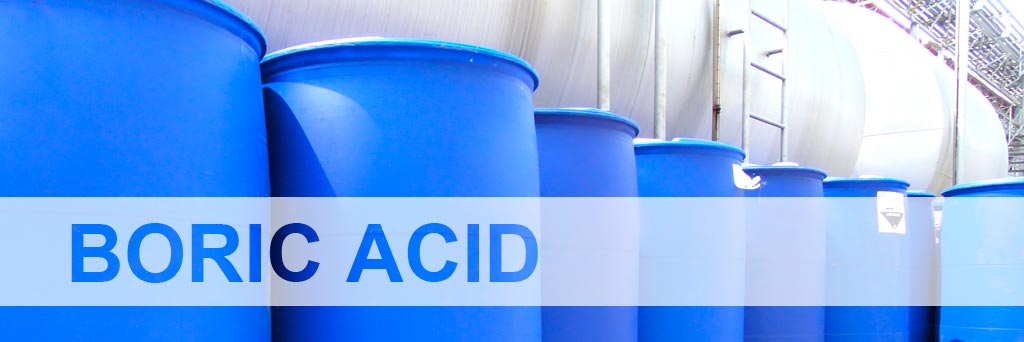Boric Acid, also called boracic acid or orthoboric acid or acidum boricum, is a weak acid often used as an antiseptic, insecticide, flame retardant, in nuclear power plants to control the fission rate of uranium, and as a precursor of other chemical compounds. It exists in the form of colorless crystals or a white powder and dissolves in water. It has the chemical formula H3BO3, sometimes written B(OH)3. When occurring as a mineral, it is called sassolite.
For medical uses, Boric Acid solutions used as an eye wash or on abraded skin are known to be especially toxic to infants, especially after repeated use because of its slow elimination rate.
Boric Acid can be used as an antiseptic for minor burns or cuts and is sometimes used in dressings or salves or is applied in a very dilute solution as an eye wash in a 1.5% solution of sterilized water.
For insecticidal uses, Boric Acid acts as a stomach poison affecting the insects' metabolism, and the dry powder is abrasive to the insects' exoskeleton. It is also made into a paste or gel form as a powerful and effective insecticide much safer to humans than many other insecticides. The paste or gel has attractants in it to attract insects. The boric acid slowly causes dehydration.
For preservation uses, Boric Acid prevents and destroys existing wet and dry rot in timbers. It can be used in combination with an ethylene glycol carrier to treat external wood against fungal and insect attack. Concentrates of borate-based treatments can be used to prevent slime, mycelium and algae growth, even in marine environments. It is added to salt in the curing of cattle hides, calfskins and sheepskins. This helps to control bacteria development and helps to control insects.
For industrial uses, the primary use of Boric Acid is in the manufacture of monofilament fiberglass usually referred to as textile fiberglass. Textile fiberglass is used to reinforce plastics in applications that range from boats, to industrial piping to computer circuit boards.
Boric Acid is used in nuclear power plants as a neutron poison to slow down the rate at which fission is occurring.
In the jewelry industry, it is often used in combination with denatured alcohol to reduce surface oxidation and firescale from forming on metals during annealing and soldering operations.
Boric acid is used in the production of the glass in LCD flat panel displays. |



